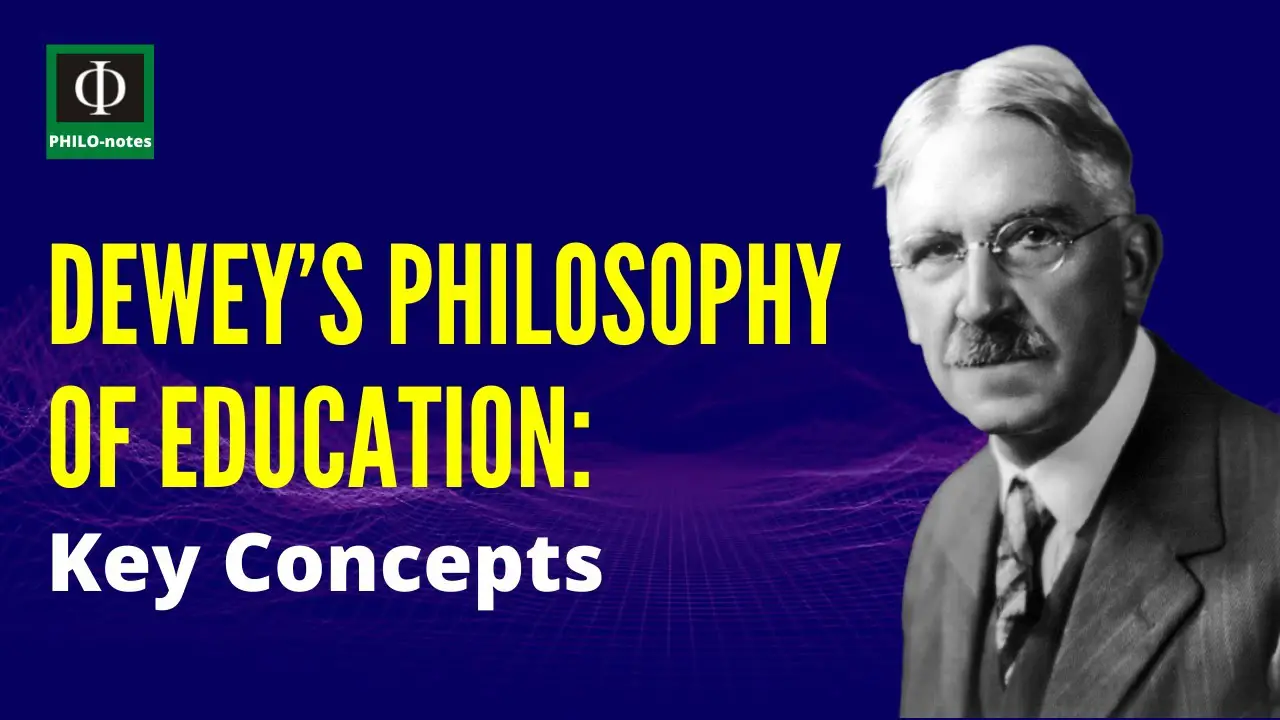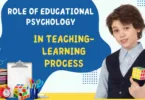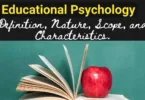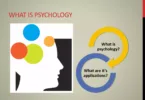John Dewey’S 4 Principles of Progressive Education
John Dewey’s views of progressive education have significantly impacted the present education system. Some fundamental principles that have shaped modern education are learning by doing, child-centred education, critical thinking and problem-solving abilities, an integrated curriculum, social skills and citizenship, and continual learning. These principles provide a foundation for developing an inclusive, student-centred learning environment that prepares students for success in the modern world.
John Dewey, a prominent American philosopher, psychologist, and educational reformer, advocated for progressive education. He felt that education should assist pupils in developing critical thinking and problem-solving skills in addition to helping them acquire knowledge. Dewey’s views of progressive education have significantly impacted the present educational system. This blog will examine his ideals and how they have influenced 21st-century education.
Learning by Doing
John Dewey felt that students learn most effectively when participating actively in the learning process. In addition to acquiring knowledge, he emphasized that learning should be experiential and practical. This implies that students should have opportunities to apply their knowledge to real-world scenarios. Instead of simply reading about how plants grow, students should have the chance to plant and care for their own plants. In this approach, they can watch and comprehend the growing process firsthand, enhancing their conceptual comprehension.
This principle of learning by doing is widely used in modern education, particularly in STEM fields. Hands-on activities, experiments, and projects are standard methods used to promote experiential learning. For example, students may design and build their machines or structures, conduct experiments in a laboratory, or create and program their robots. By actively engaging with the material and applying it to real-life situations, students develop a deeper understanding of the concepts and are more likely to retain the information.
Child-Centred Education
Dewey concluded that education should be adapted to each student’s needs. This ideology has been incorporated into contemporary education, notably through the child-centred method. Child-centred education emphasizes the significance of knowing each student’s learning style, interests, and skills and creating student-centred, experiential, and culturally responsive learning settings. By doing so, teachers may create engaging, relevant, and practical tailored learning experiences for their pupils. John Dewey thought that each student’s education should be adapted to their needs. He highlighted the significance of knowing each student’s unique learning style, interests, and strengths. Dewey’s educational philosophy was founded on the notion that education should not only focus on acquiring knowledge but also on the development of the complete person.
Dewey’s concept is the foundation for child-centred education, a general approach to modern education. This approach places the student’s needs and interests at the centre of the learning process. Teachers design inclusive, student-centred learning environments for all students, regardless of their abilities or backgrounds.
An essential principle of child-centred education is that each student’s education should be personalized to his or her requirements. Teachers must consider their pupils’ varied learning styles, interests, and abilities. This implies that students should be given some autonomy in their learning and encouraged to accept responsibility for their education. In doing so, students are more likely to be interested and motivated, which can result in more extraordinary academic performance.
A further premise of education based on the kid is that learning should be experiential and practical. Students should have the opportunity to apply their knowledge to real-world scenarios. This strategy emphasizes the significance of hands-on activities, experiments, and projects for experiential learning. By actively engaging with the material, students gain a deeper comprehension of the concepts and are more likely to remember them.
A third concept of education focusing on the child is that learning should be inclusive and sensitive to cultural differences. Teachers must develop inclusive learning environments for pupils of all backgrounds. Teachers must know their students’ cultures and backgrounds and include this information in their lessons. To engage all students in the learning process, teachers may, for instance, utilize examples from different cultures in their classes or employ culturally responsive teaching practices.
Teachers must employ various student-centred and inclusive instructional practices to implement child-centred education. Individualizing instruction to match the requirements of specific pupils is one technique. For instance, teachers may provide varying degrees of support for students based on their particular requirements, or they may employ a variety of materials and resources to satisfy the needs of their pupils.
Another technique is using project-based learning, in which students work on a project based on a real-world problem or issue. This strategy enables students to apply their critical thinking, problem-solving, and creative abilities to discover answers to real-world situations. If this is the case, students will be more involved in learning and have a more profound knowledge of the subjects.
Critical Thinking and Problem-Solving Skills
Education, according to Dewey, should help students develop critical thinking and problem-solving skills. He stressed the importance of these talents for success in the modern world. Critical thinking and problem-solving skills are still highly valued in the market in the 21st century. Current education systems combine these skills through various teaching techniques, including project-based learning, inquiry-based instruction, and group discussions. Critical thinking and problem-solving skills are becoming increasingly important in today’s environment. As the world grows increasingly complex and linked, assessing information, recognizing problems, and providing practical solutions are crucial. These talents are essential for individual success and the advancement of society.
John Dewey was one of the first to advocate for using critical thinking and problem-solving techniques in schools. Dewey believed that education should impart knowledge and aid students in acquiring the abilities needed to comprehend and resolve issues in the outside world. This is still valid today, just as Dewey wrote it over a century ago.
Critical thinking and problem-solving abilities are highly valued in the workplace in the twenty-first century. Employers seek people who can identify problems, develop creative solutions, and work cooperatively in a team environment. These abilities are applicable in a variety of fields and occupations. Strong critical thinking and problem-solving abilities can help you stand out from the competition whether you work in healthcare, finance, or technology. How, then, can we cultivate these fundamental abilities?
Teaching strategies that encourage critical thinking and problem-solving have been incorporated into modern educational systems. Project-based learning is one of these strategies. Students engage in project-based learning, where they work cooperatively to solve problems and challenges from the real world. Students are more engaged and motivated to learn when working on real-world issues because they can immediately see how their learning skills will be used.
Inquiry-based learning is another teaching strategy that encourages critical thinking and problem-solving. In inquiry-based learning, students are encouraged to ask questions, delve deeply into subjects, and create their own theories and hypotheses. This method teaches students to think analytically as they learn to gather and assess evidence to support their conclusions.
Along with these teaching strategies, group discussions are a powerful tool for fostering critical thinking and problem-solving abilities. Students are urged to contribute their thoughts, consider other people’s viewpoints, and engage in productive debate during group discussions. Through this process, students can improve their critical thinking, collaboration, and communication capacity.
However, mastering particular teaching techniques is not the only requirement for improving one’s critical thinking and problem-solving abilities. It necessitates a certain degree of intellectual curiosity, a readiness to disprove presumptions and an ability to think creatively. It involves being flexible, imaginative, and open-minded. It consists of evaluating data critically, recognising issues, and creating workable solutions.
It is critical to be proactive in looking for opportunities to learn and grow if you want to develop these skills. This can be done by enrolling in courses that teach critical thinking and problem-solving, attending seminars or workshops, or reading books and articles about the topic. It can also entail looking for experiences that push you to think creatively, such as working on a complex project, volunteering for a cause you believe in, or visiting a foreign location.
The ability to think critically and solve problems effectively is crucial for success in today’s world, personally and professionally. Whether you are a professional or a student, these skills can help you stand out from the crowd and accomplish your objectives. So let us embrace these abilities and look for opportunities to enhance them. Critical thinkers and problem solvers are more crucial than ever today.
Integrated Curriculum
Dewey believed that education should not be restricted to particular fields of study. Instead, he argued favouring an integrated curriculum that combines various subjects into a cohesive unit. This strategy encourages a comprehensive view of the world and enables students to make connections between multiple subjects. An integrated curriculum is still used in modern education, especially in the elementary grades. Teachers employ this method to help students better understand the world. An integrated curriculum is a type of teaching approach that unifies various subjects into a logical whole. This method promotes a comprehensive worldview by highlighting the connections between different topics. John Dewey, a philosopher who believed that education should not be restricted to discrete subjects but should instead give students a broad, integrated understanding of the world, was one of the earliest proponents of this strategy.
According to Dewey, the traditional educational model, which emphasizes teaching distinct subjects, is insufficient for preparing students for the real world. In the real world, issues and difficulties do not neatly fall under the headings of distinct subjects. Instead, they demand the capacity to connect disparate fields of knowledge and a comprehensive understanding of the world.
By highlighting the connections between various subjects, an integrated curriculum can aid students in developing this comprehensive understanding. For instance, a lesson on climate change might cover social studies, math, language arts, and science concepts. Students could study climate change’s social and economic impacts from a social studies perspective and learn about its causes and effects from a scientific perspective. Additionally, they could conduct data analysis, make graphs and charts in math class, and compose argumentative essays in language arts class to support climate change.
An integrated curriculum has many advantages. It can, first and foremost, aid students in gaining a deeper understanding of the world. Students can better understand how things work by making connections between various subjects and recognizing how they are all interconnected. As they gain the ability to evaluate and combine data from various sources, this can also aid in developing critical thinking skills.
An integrated curriculum can also encourage students’ love of learning. Students are more likely to be engaged and motivated to learn when information is presented more thoroughly and connected. They can connect their lessons to the outside world and recognize how they have practical applications.
Additionally, an integrated curriculum can aid students in acquiring critical life skills like cooperation and communication. Students can develop their communication skills with people from various backgrounds and fields of expertise by working on interdisciplinary projects. Additionally, they can learn how to cooperate and work through issues as a group.
An integrated curriculum is still used in contemporary education, particularly in the elementary grades. Teachers employ this strategy to encourage a love of learning in their students and to assist them in developing a more comprehensive understanding of the world. Instead of just skimming over topics in separate subjects, students can learn about subjects in-depth in an integrated curriculum. With this strategy, students may gain a deeper appreciation and comprehension of their study subjects.
However, putting an integrated curriculum into place can also be challenging. When teachers have different schedules and teaching philosophies, it can be challenging for them to coordinate and collaborate effectively across subjects. Furthermore, some subjects might be more difficult to integrate than others. For instance, integrating math and language arts may be more complicated than integrating science and social studies.
Schools and districts can help teachers learn how to successfully integrate various subjects by offering professional development opportunities. They can also provide teachers with resources to help them implement an integrated curriculum in their classrooms, such as lesson plans and curriculum guides.
An integrated curriculum is a teaching strategy that unifies various subjects coherently. This strategy encourages a comprehensive view of the world and enables students to make connections between various subjects. Students can acquire critical thinking abilities, a love of learning, and crucial life skills like cooperation and communication with an integrated curriculum. Even though implementing an integrated curriculum can be difficult, it is a valuable strategy that can offer students many advantages.
Social Skills and Citizenship
Dewey thought education should emphasize academic subjects, aid students in social skill development, and prepare them to be responsible citizens. He stresses the value of instilling in students the skills of teamwork, effective communication, and civic responsibility. Modern educational systems incorporate this principle through various teaching strategies like service learning, character education, and social-emotional learning. In addition to teaching students knowledge and skills, education also aims to prepare them to become responsible members of society. In his belief that education should not only concentrate on academic subjects but also the development of social skills and citizenship, philosopher John Dewey emphasized this principle.
The ability to effectively communicate, collaborate with others, and resolve conflicts amicably and respectfully are all referred to as social skills. Success in both personal and professional relationships depends on these abilities. On the other hand, citizenship refers to a person’s obligation to positively contribute to society and take an active role in their local communities.
Dewey believed that civics and social skills should be taught in schools. This method aids in developing a student’s social and cooperative skills and academic knowledge. Through various teaching strategies like service learning, character education, and social-emotional learning, current educational systems have incorporated this idea.
A service-learning teaching strategy involves students in volunteer work while studying academic material. Through service learning, students can gain a sense of civic duty and the significance of giving back to society. For instance, students can participate in community service at a food bank while studying hunger and poverty in social studies classes.
Another instructional strategy that emphasizes the growth of virtues like respect, responsibility, and integrity is character education. Students gain the ability to be moral, responsible, and ethical people who can positively contribute to society through character education. For instance, students can practise honesty and respect in their daily interactions with others while learning about the value of these virtues.
A teaching strategy called social-emotional learning emphasizes the growth of social and emotional abilities like self-awareness, self-control, and empathy. Students gain the ability to control their emotions, form wholesome relationships, and take charge of their actions through social-emotional learning. For instance, through role-playing and other activities, students can learn about the value of empathy and perspective-taking while honing these abilities.
There are many advantages to including citizenship and social skills in education. It primarily assists students in becoming dependable, productive adults who can positively contribute to society. Additionally, it aids students in acquiring vital life skills like collaboration, conflict resolution, and communication, all of which are necessary for success in both interpersonal and professional relationships.
Additionally, teaching civics and social skills in schools can aid in reducing bullying and other undesirable behaviours. Schools can create a positive and supportive learning environment where all students feel valued and respected by teaching students to be respectful and responsible individuals.
However, integrating citizenship and social skills into the classroom can be difficult. These skills must be effectively taught by teachers who can also cover academic material. Some students might also need extra help and resources to acquire these abilities.
Schools and districts can help teachers learn how to effectively teach social skills and citizenship by offering professional development opportunities. To assist teachers in incorporating these skills into their instruction, they can also offer resources like lesson plans and curriculum guides. Citizenship and social skills are crucial facets of education. Schools can assist students in becoming successful and positive members of society by teaching them how to collaborate, communicate clearly, and act as responsible citizens. Modern educational systems incorporate this principle through various teaching strategies like service learning, character education, and social-emotional learning. While integrating citizenship and social skills into education can be challenging, it is a worthwhile strategy that can benefit both students and society in many ways.
Continuous Learning
Dewey believed that education should not stop when students graduate from high school. He emphasized the value of lifelong learning or the idea that education should continue throughout one’s life. The twenty-first century is still applicable to this principle. It is crucial to continuously learn new skills and adapt to new technologies in today’s quickly changing world. The Value of Ongoing Education in the Modern World
The eminent philosopher and educator John Dewey believed that education should continue after students graduate high school and that learning is not restricted to the classroom. Lifelong learning, which emphasizes the value of ongoing education throughout one’s life, is a concept that Dewey strongly supported. His principles are more applicable than ever in today’s rapidly evolving world.
Continuous learning is learning new information, abilities, and skills throughout a lifetime. This idea is crucial because it enables people to change their circumstances, learn new skills, and maintain competitiveness in the job market. Continuous learning is essential to success and personal development in today’s fast-paced, constantly-evolving world.
Why is Continuous Learning Important?
Keeping up with Changing Trends and Technologies
The world is changing quickly, and new technologies are constantly being developed. People who engage in continuous learning are better able to stay current with emerging trends and adopt new technologies, which keeps them competitive in the job market.
Career Advancement
Continuous learning is essential for career advancement. Employers prefer individuals who are committed to learning and expanding their skillset. Employees who embrace continuous learning are more likely to be considered for promotions and other career advancement opportunities.
Personal Development
By increasing one’s knowledge and skill set, ongoing learning helps one develop personally. Learning new things fosters creativity, fosters self-confidence, and fosters personal development. Continuous learning makes people more well-rounded and adaptable, which increases their value to potential employers.
Improved Cognitive Function
Continuous learning can improve cognitive function and delay age-related cognitive decline. Research has shown that individuals who engage in lifelong learning have better memory, problem-solving skills, and overall cognitive function.







[…] instruction in special education encourages ongoing assessment and progress monitoring. Teachers continually assess students’ understanding and progress to identify […]
[…] been many other proponents of Perennialism throughout the years. These include philosophers such as John Dewey, George Santayana, and Hannah Arendt, as well as educators such as Mortimer Smith, Alexander […]
[…] providing clear criteria for grading. These subtopics are crucial in learning assessment, providing educators with objective measures to gauge student progress and inform instructional […]
[…] and summative assessments, educators can ensure a comprehensive evaluation of students’ progress and promote continuous improvement in the educational […]
[…] plays a crucial role in understanding the progress and effectiveness of education programs. It involves making valid judgments about students’ learning and the overall success […]
[…] a combination of formative and summative assessments, educators can comprehensively understand student progress and adjust their teaching strategies accordingly. This approach helps identify students’ […]
[…] function of thought in adapting the human organism to its environment”. The experimentalism of John Dewey is based upon this biological pragmatism according to which the aim of all knowledge is harmony of […]
[…] John Dewey believed that education should be a process of active inquiry, with a focus on experiential learning and problem-solving in the real world. […]
[…] rather than fixed or absolute. Influential pragmatist thinkers include William James, John Dewey, and Charles Sanders […]
Thank you for your sharing. I am worried that I lack creative ideas. It is your article that makes me full of hope. Thank you. But, I have a question, can you help me?
Your article helped me a lot, is there any more related content? Thanks!
Your point of view caught my eye and was very interesting. Thanks. I have a question for you.
[…] process, the “founder of modern educational psychology,” and the developer of the law of effect principle, commented on this concept. He stated that this means that measurement is a process that happens […]
[…] of each student. Through adaptive technologies, differentiated instruction, and flexible pacing, educators provide personalized learning pathways that allow students to progress at their own pace and receive targeted support and […]
Can you be more specific about the content of your article? After reading it, I still have some doubts. Hope you can help me.
[…] States, at the University of Chicago in 1894. Dewey believed that children learn best by doing. Dewey advocated that education should focus on the child as a whole. He emphasized the child’s adaptation to the environment. […]
[…] problems is recognizing the importance of child development. Every child is unique, and their educational needs evolve as they progress through different stages of development. With the understanding of child growth and development, […]